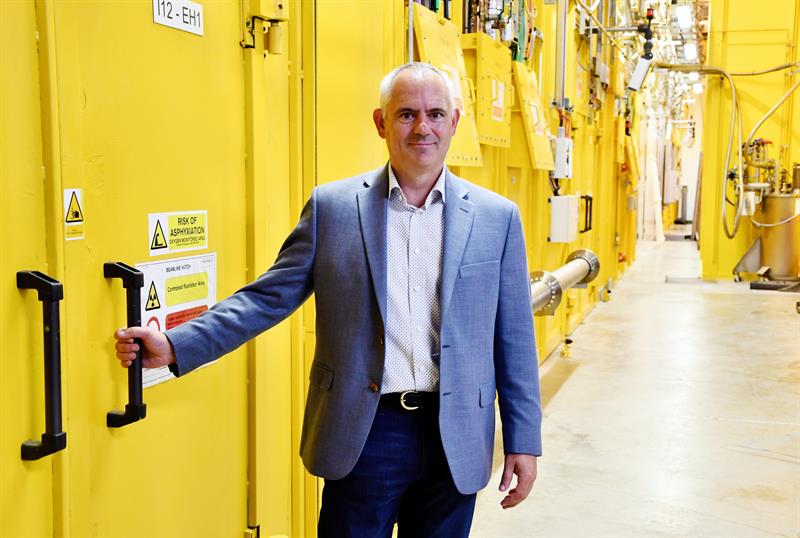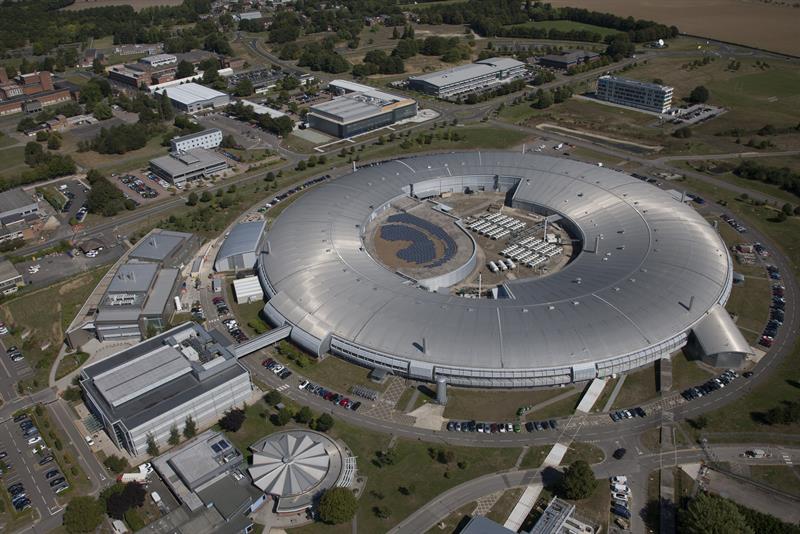Prof Seales is director of the Digital Restoration Initiative at the University of Kentucky (US), a research program dedicated to the development of software tools that enable the recovery of fragile, unreadable texts.
According to Prof Seales: “Diamond Light Source is an absolutely crucial element in our long-term plan to reveal the writing from damaged materials, as it offers unparalleled brightness and control for the images we can create, plus access to a brain trust of scientists who understand our challenges and are eager to help us succeed.
“Texts from the ancient world are rare and precious, and they simply cannot be revealed through any other known process. Thanks to the opportunity to study the scrolls at Diamond Light Source, we are poised to take a tremendous step forward in our ability to read and visualise this material.”
Over the past two decades, Prof Seales and his team have worked to digitally restore and read the vast amount of material in the “invisible library” of irreparably damaged manuscripts. In 2015 they succeeded in visualising the never-before and never-to-be-seen writing trapped inside five complete wraps of the ancient Hebrew scroll from En Gedi. For the first time ever, a complete text from an object so severely damaged that it could never be opened physically was digitally retrieved and recreated, representing a true technical breakthrough.It is this technology that Seales’ team plans to deploy on the data collected at Diamond.

Professor Brent Seales
A long-term goal of Prof Seales has been to reveal the contents of the most iconic items in the invisible library, the Herculaneum scrolls. Buried and carbonised by the deadly eruption of Mount Vesuvius in 79 AD, the scrolls are too fragile to be opened and represent the perfect storm of important content, massive damage, extreme fragility, and difficult-to-detect ink.
These papyri were discovered in 1752 in an ancient Roman villa near the Bay of Naples believed to belong to the family of Julius Caesar. They represent the only surviving library from antiquity.The majority of the 1,800 scrolls reside at the Biblioteca Nazionale di Napoli, although a few were offered as gifts to dignitaries by the King of Naples and wound up at the Bodleian Library at Oxford University, the British Library, and the Institut de France.
Last May, Prof Seales headed a small team of undergraduate students in Paris to survey the Institut de France’s Herculaneum collection. They examined two completely intact scrolls, along with four small fragments from scrolls unrolled in the late 1800s. All six items will be scanned at Diamond. Because the four fragments contain many layers and feature visible, exposed writing on the top, they will provide the key data needed to develop the next iteration of the team’s “virtual unwrapping” software pipeline, a machine learning algorithm that will enable the visualisation of carbon ink.
The use of carbon ink is one of the main reasons these scrolls have evaded deciphering, according to Prof Seales. Unlike metal-based inks, such as the iron gall used to write medieval documents, carbon ink has a density similar to that of the carbonised papyrus on which it sits. Therefore, it appears invisible in X-ray scans.
“We do not expect to immediately see the text from the upcoming scans, but they will provide the crucial building blocks for enabling that visualisation,” said Prof Seales.
“We believe strongly — and contrary to conventional wisdom – that tomography does indeed capture subtle, non-density-based evidence of ink, even when it is invisible to the naked eye in the scan data.The machine learning tool we are developing will amplify that ink signal by training a computer algorithm to recognise it – pixel by pixel – from photographs of opened fragments that show exactly where the ink is — voxel by voxel — in the corresponding tomographic data of the fragments. The tool can then be deployed on data from the still-rolled scrolls, identify the hidden ink, and make it more prominently visible to any reader.”
Principle Beamline Scientist on the Diamond I12 Beamline where the experiment will take place, Dr Thomas Connolley, added: “This is the first time an intact scroll has been scanned in such detail at Diamond Light Source. We are very excited to work with the research team, playing our part in what we hope will be a major step forward in unlocking the secrets that the scrolls contain.”

Diamond Light Source











